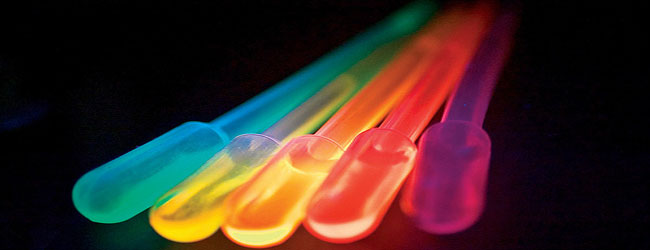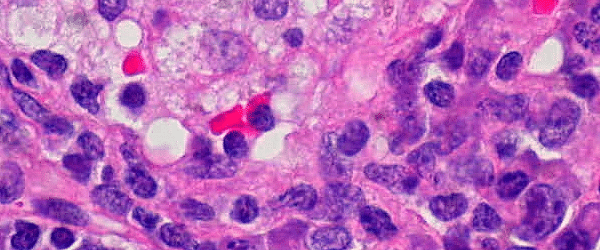What Does Oil Red O Stain?
Oil Red O (‘ORO’) is used to demonstrate the presence of fat or lipids in fresh, frozen tissue sections. Introduced by French in 1926, ORO is a fat-soluble diazo dye, and is classified as one of the Sudan dyes which have been in use since the late 1800s.
Like most stains used to detect lipids, ORO isn’t a true special stain, since it can’t form bonds with lipid components. It is actually a pigment that functions as an oil-soluble colorant, and the technique represents a physical method of staining.
Why Do We Need Oil Red O?
Lipids in tissues pose a bit of a challenge to histologists and pathologists for a couple of reasons:
1. Chemically, they are relatively unreactive, and even unsaturated lipids have few sites that stain molecules can bind to.
Enjoying this article? Get hard-won lab wisdom like this delivered to your inbox 3x a week.

Join over 65,000 fellow researchers saving time, reducing stress, and seeing their experiments succeed. Unsubscribe anytime.
Next issue goes out tomorrow; don’t miss it.
2. To add insult to injury, lipids don’t stay in tissues after routine processing: they tend to be dissolved and leached out by xylene and alcohol solvents during the paraffin embedding process. So, by the time haematoxylin and eosin stain is applied, the presence of lipids can only be suspected by their absence – that is, the unstained ‘holes’ which are left behind.
This isn’t a problem in plastic-embedded tissues that are processed without lengthy solvent immersions. However, most labs still use paraffin wax embedding because it is faster, cheaper and well-suited to automatic tissue processors.
General Principles of the Stain
The basis for staining lipids with an oil-soluble dye lies in its increased solubility in fatty substances as opposed to the dye solvents which are used in routine tissue processing.
The choice of solvent for this reaction is also critical, since it must be able to extract excess dye without dissolving the lipid to be stained- propylene glycol is the preferred solvent for this technique.
The end result is that fat and lipids in tissue sections stain bright red, and nuclei stain blue. Although other stains are available to help detect the presence of lipids in tissues, the intensity of its red coloration makes ORO the preferred choice.
Who Uses Oil Red O Stain?
This stain is used widely for diagnostic, research, and even forensic purposes.
In diagnostic labs…
Pathologists use ORO to help diagnose various conditions in which fat may appear in abnormal locations. For instance, bone fractures or crush injuries to fatty regions of the body may release fat into the bloodstream, leading to fat emboli which can be fatal- these emboli are detected using ORO. It is also useful to identify tumors, such as lipomas and liposarcomas, which arise from fat cells. Deposits of fat may also appear in the liver and kidney in a variety of pathological conditions.
In research labs…
Researchers investigating any of the above medical conditions, as well as those involved in research in fat metabolism, may also routinely examine ORO-stained tissue sections to detect the presence of fat in tissues of interest. Others may simply use the stain if they come across areas in H&E stained tissue sections which lead them to suspect the presence of fat.
In forensic labs…
ORO is also used in forensic pathology as a reagent for fingerprint development. Detecting fingerprints on porous surfaces which have been exposed to moisture is difficult as the amino acids from the prints will dissolve in water. In 2004, Alex Beaudoin discovered a technique using ORO as a reagent to enhance latent prints produced by the lipids found in fingerprints. This makes it particularly easy to reveal latents on wet, porous surfaces such as paper and cardboard.
How do you use Oil Red O in your lab?
You made it to the end—nice work! If you’re the kind of scientist who likes figuring things out without wasting half a day on trial and error, you’ll love our newsletter. Get 3 quick reads a week, packed with hard-won lab wisdom. Join FREE here.






